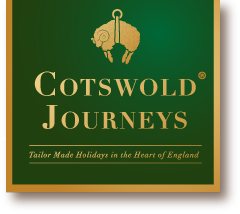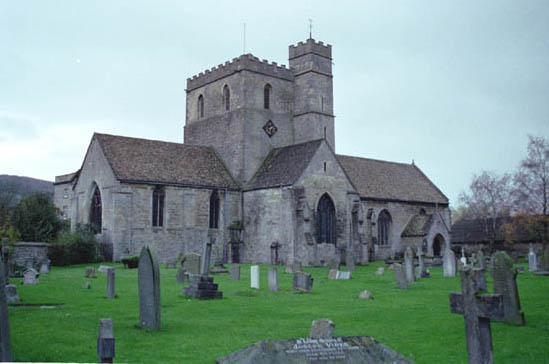Leonard Stanley is not a nineteen fifties comedian, but a village in the Stroud Valley, just south of Stonehouse, in the lee of the Cotswold escarpment. It is a village that you could easily pass through and think little of or, more likely, bypass altogether. Yet, like so many forgotten places, it has a history and once would have made a thriving contribution to the Cotswold cloth trade. You have only to look at the names of the houses – Weaver’s Cottage and Tannery House among them. And it must have been considered important before that, considering its hefty church, which was originally part of a significant priory, which had strong links with what was the Abbey Church of St. Peter and is now Gloucester Cathedral. The village’s original name was Stanlege. With the arrival of the Normans, the Saxon noblemen were dispossessed, and the lordship of the manor was given to Roger de Berkeley. One of his descendants established a cell in the Benedictine abbey at Gloucester dedicated to St. Leonard, or Lienard (died 599), a Frankish nobleman much renowned for his piety and for the delivery of captives – a shield depicting the chains of St. Leonard can be seen in the present day church. At this point, the village was known as Stanley St. Leonard’s, later abbreviated to Leonard Stanley.
The priory no longer exists, although the general layout is still visible and some of its buildings, including what is thought to have been the original Saxon parish church dedicated to St. Swithun, Bishop of Winchester, have been absorbed into the adjacent farm. That first church has been a barn probably since the Dissolution of the Monasteries, during the reign of Henry VIII. Until that time, from when the current church was built in the 12th century, it may well have served as the priory guesthouse or a chapel. Nearby is what was probably the monastic fishpond.
The current church, first dedicated to St. Leonard, but somehow reclaiming its heritage from the Saxon chapel next door and so becoming known as St. Swithun’s, is an unusual building. Very few changes have been made since its construction in 1129, apart from a 14th-century roof and some later windows, as well as the usual decorative losses following the Reformation. Enter through the north door, with its 12th-century Norman zig-zag decoration. The nave is aisleless and at the crossing are two huge Norman arches below the tower, from which the bell ropes dangle in full view of the congregation. One of the first things you will notice is the ancient ‘Fieldgate’ clock mechanism known as ‘Old Solomon’ dating from about 1600. It was removed from the tower when it was replaced by an electric mechanism. The arch in which it is set originally gave access to the cloister, long since gone. Further along the south wall are features illustrating how the church has been modified to meet the requirements of the time. In the base of the wall two recessed tombs, dating from the 13th and 14th Centuries respectively, were discovered during renovation work in 1912. These tombs predate the installation, in the 15th Century, of the ‘Rood Screen’, which separated the part of the church occupied by the monks from the part used by the local populace, a tradition dispensed with in the Reformation in order to bring congregation and liturgy closer together. The stair, formed in the south wall, gave access to the screen and cut across one of the tombs. Access to the screen would have been required to tend the candles lit before the Crucifix, the ‘rood’. Rood was originally the only Old English word for the instrument of Christ’s death, with the words ‘crúc’ and, in the north, ‘cross’ (from either Old Irish or Old Norse) appearing later. The word “crucifix” was first recorded in English in the Ancrene Wisse, a monastic manual, of about 1225. More precisely, the Rood was the True Cross, the specific wooden cross used in Christ’s crucifixion.
In the chancel is a pair of remarkable ‘picture’ capitals, one with a carving of Mary Magdalene anointing Christ’s feet, the other representing the birth of Jesus. These are unique in Gloucestershire. On the south wall of the sanctuary, to the right of the altar and behind a glass screen, is a very unusual medieval sculpture depicting Adam and Eve in the form of animals.
The original four bells, dating from the 14th, 15th, and 17th centuries, were recast in 1908 into a ring of six bells. In the 1920s, due to movement in the tower, bell ringing ceased and the tower was strengthened. It was not until 1982 that the bells were re-hung and heard again.
St Swithun, about whom very little is known, is thought of today, if at all, in connection with the weather: if it rains on Saint Swithun’s day, the 15th of July, it will rain, it is said, for forty days.
‘St Swithun’s day if thou dost rain
For forty days it will remain
St Swithun’s day if thou be fair
For forty days ’twill rain nae mare’
Swithun, regarded as one of the saints to whom one should pray in the event of drought, was Bishop of Winchester from 852 to his death on in 862. He must have been well regarded locally as he was adopted as patron of the restored church at Winchester and his body transferred there on 15th July 971. It seems that miracles preceded and followed the move and that rain on the day in question gave rise to the surviving legend, although it is also the case that the date in various parts of Europe is a day of ‘augury’, pre-dating the Christian era. There is a scientific basis to the legend of St Swithun’s day. Around the middle of July, the jet stream settles into a pattern that usually holds until the end of August. When the jet stream lies across or south of the British Isles, Arctic air and Atlantic weather systems predominate.
A footnote to the village itself. The great British painter, Sir Stanley Spencer, who is usually associated with the Berkshire village of Cookham, stayed here throughout 1939 and 1940. Remembered as something of an eccentric, who gave the impression of a village simpleton, he resided in the upstairs front room of the White Hart. During his time here he was prolific, producing twenty three paintings, among the most important of which were ‘Us in Gloucestershire’ and ‘The Wool Shop’.


0 Comments